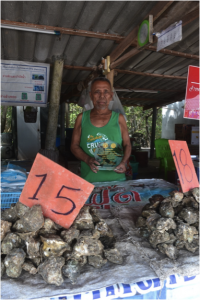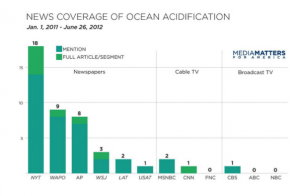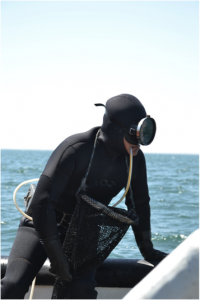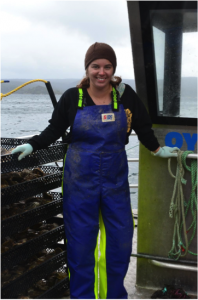 Terry Williams died on July 19. I will miss him, as will many others who loved and learned from this man.
Terry Williams died on July 19. I will miss him, as will many others who loved and learned from this man.
I first met Terry Williams in 1982. He became a lifelong mentor, colleague, friend and (as he was for thousands) an inspiration. At the time, I was a rookie journalist covering efforts throughout Salmon Country to overcome pollution and degradation of watersheds and estuaries, nature’s salmon nurseries. Billy Frank Jr., the fiery, generous chairman of the Northwest Indian Fisheries Commission, introduced me to the Tulalip tribal fisheries leader when I asked him who was blazing a trail to protect salmon habitat.
Terry came of age in a movement founded on a series of seemingly narrow tribal victories in federal courts, which affirmed tribes long-trampled claims: under 19th Century treaties, they retained fishing rights which must be restored. Well, exactly who can sign a treaty? Only a sovereign government. Equipped with recognized treaty rights, tribes in the Pacific Northwest uplifted themselves. Terry rose to prominence as a humble, patient guide to his own and other tribes in the transformative labor of rebuilding their governments, reclaiming their long-lost powers to regulate fisheries and other resources, recruiting formidable technical staff, and successfully pressing the United Nations to recognize and protect indigenous rights under international law—even securing intellectual rights for traditional knowledge.
Terry was always self-effacing, but in such a movement his remarkable 360o intellect was far too valuable to waste. Tribal leaders insisted that he step up (though reluctantly at first) from the modest job of tribal cop to lead Tulalip’s nascent fisheries department. His responsibilities grew over time. For decades he led the wide-ranging Tulalip Office of Fisheries and Treaty Rights, ranging from Tulalip’s home watershed—the Snohomish River—to Washington DC and Geneva. When President Clinton tapped Terry to build the EPA’s Indian Office, he earned the respect and admiration of tribal leaders across the country, along with federal agency executives and Congressional leaders. Even old adversaries in industry came to admire and trust him, understanding that he was a trustworthy champion of tribes’ newly-regained treaty authorities to manage and protect the lands and waters that feed us all.
At Global Ocean Health, Terry became a close partner in our work starting in 2011, when he embraced our proposal to create Washington’s Blue Ribbon Panel on Ocean Acidification. Terry joined with Bill Dewey of Taylor Shellfish to bring that proposal to Washington Gov. Gregoire, and within weeks we were working with the governor’s staff to convene the panel, kicking off a wave of similar efforts by coastal states and nations to tackle ocean acidification. Terry soon roped us in to help Tulalip Tribes build its forward-leaning climate and habitat work. At Terry’s suggestion, in 2018 the tribe commissioned us to help tribes statewide shape a cap-and-invest carbon pricing policy that could work for Indian Country as well as the rest of the state. The first version died under a $32 million blitz from the oil industry, but in 2021 Terry lived to see most of this policy become law with the passage of Washington’s Climate Commitment Act (CCA)—notably this time with support from BP, the oil company that led the opposition in 2018. The CCA has been hailed as the nation’s most ambitious climate policy.
A few years ago Terry joined the board of the National Fisheries Conservation Center, participating wholeheartedly in our Global Ocean Health program. In the final year of his life he helped to launch what is now our largest initiative, Building Tribal Leadership in Carbon Removal.
On a personal note, losing Terry landed like the fall of the tallest tree in an ancient forest. Writing this farewell has been like trying to lift that tree, a weight almost impossible to bear or articulate. Yet we all knew this time would come. For many years Terry’s faltering health was a subject of anxious speculation among his friends, family and colleagues. Terry endured diabetes, heart failure, PTSD, and lingering effects of Agent Orange, surviving multiple strokes and heart attacks. A man of implacable faith and gratitude, he never complained, but his last years were wracked. Anyone who knew him well could see it.
A few years ago at a meeting in Seattle, I watched Terry give a spectacularly clear talk to colleagues about a complex nest of regulatory loopholes that were quietly eroding protected fish and wildlife habitats. While he was speaking, he suffered a mild stroke. He slumped slightly, nodded off for a moment, then regained his pace and, after a few misplaced words, finished his talk, wrapping up with utter lucidity. It was late in the day, the meeting ended, and everyone else gathered their notes, thanked him and went home. I sat with Terry while he looked around the room, regaining his bearings. “I think I can stand up,” he said. He wobbled to his feet, bracing himself on the table, and sat back down. “I need to get home,” he said. “I think I’m okay to drive.” He held up his hands to form a frame in front of his face. “When I look side to side, I can see this much, but everything else is dark.” I shook my head and told him to hand me his car keys. “We’re going to the hospital, Terry. You just had a stroke.” He made no argument. Two weeks later, the doctors let him out again. I picked him up at the hospital door, where a gaggle of doctors surrounded him, offering their blessings. They had enjoyed listening to his heartfelt teachings about the work of restoring our living home. As Terry gingerly lowered himself into the car, one of the doctors called out, “Stay healthy, Terry. The world needs you.”
Wherever Terry is today, the world still needs him. We are incredibly fortunate that Terry’s biographer, Aniko Bahr, is completing the book that he meant to leave behind for a world that must now carry on his work. Aniko is a neighbor and dear friend of the Williams family at Tulalip, and her obituary for Terry follows. It was Terry’s family who named Global Ocean Health to receive memorial contributions in his honor. As always, we are in their debt.
—Brad Warren
Photo: Terry speaking at our memorial for Julia Sanders and Thane Tienson in June 2022
HE’S ONE OF THE ANCESTORS NOW
Terrance Rollo Williams left this world at age 74 on July 19th, 2022. He died peacefully in his sleep with loving family members nearby, just days after he and his wife Suzanne celebrated their 50th wedding anniversary.
Terry was a Tulalip Tribes elder, servant of God and one of Mother Earth’s champions. His mission to protect and restore Her resources for future generations was deeply rooted in an intimate relationship with Spirit. A powerful yet humble man, he attributed his accomplishments always to the Creator. “When I look back on all I’ve done,” he said recently, “… something greater [was] guiding me, helping me.”
Terry was born April 23,1948, the second of four children of Reverends Adam Williams and Marjory Williams. His parents’ community-service ministry in the Tulalip Church of God defined Terry’s spiritual and cultural formation. “I was an egg of the Church,” he liked to say. Tulalip’s Mission Beach was his playground, Nature his teacher, timeless Salish tradition and Christian faith the pillars of his lifelong values. From their parents, Terry and his siblings learned unconditional generosity and an indefatigable work ethic.
Before enlisting in the army, Terry studied nursing; returning from Viet Nam a decorated US Army veteran, he earned degrees in Mechanics and Law and Justice over a thirteen-year period while working for the Burlington Northern Railroad. Tulalip Tribes leaders Bernie Gobin and Stan Jones recruited Terry to the tribal Police Department where enforcement issues soon led him to Fisheries and, over the years, to Natural Resources and Treaty Rights. In Washington DC he “worked the Hill” for twenty-five years alongside the revered Nisqually activist Billy Frank, Jr. to advance the Treaty Rights cause. Terry was appointed to a series of influential leadership positions by Washington State Governors Booth Gardner and Chris Gregoire, national EPA Administrator Carol Browner and Presidents Clinton and Obama. In collaboration with a network of expert colleagues, Terry opened doors for indigenous peoples to enter the halls of power, not merely as equals, but rather as confident experts. At the United Nations and the Conventions on Biological Diversity, indigenous representatives now participate in environmental policy-making that codifies their rights of survival and stewardship and strengthens climate change legislation.
Terry had a gift for finding common ground. As the Tulalip Tribes’ environmental justice spokesperson, this tireless warrior fought to bring together traditional knowledge and western science on the battleground of climate action. Clocking hundreds of thousands of air miles, he spread the message of indigenous leadership on environmental issues and spearheaded the creation of numerous tribal, governmental, business and non-profit coalitions. He forged alliances among disparate, often adversarial stakeholders; he taught the players to listen to each other with the same compassionate attention that he gave unfailingly to each and every one. For his well-earned reputation as a thought leader and for the magnitude of his contributions, Terry received countless honors and lifetime achievement awards.
But in the end, that is not what folks are talking about today. Above all, his family, friends and colleagues remember this: Terry embodied agapé, love and kindness. He wished no one ill, spoke gently and looked into people’s eyes with a penetrating warmth, whether they’d just met him or had known him for decades. His older grandchildren recognized and loved his quiet, gentle spirit, while the little ones approached him with joy and delight. We’ll remember that his brilliant mind reached thousands of years back into history — to the moment the people first welcomed the salmon to the watersheds of his beloved Puget Sound. And just as easily, he turned his eyes towards a future centuries away, where he saw indigenous leadership empowering the generations to reap again the abundance they once knew.
Terrance Rollo Williams has joined the ancestors. His mission, far from done, is only enhanced by broader scope and sharper vision. He is survived by the love of his life Suzanne Claire Tabacco Williams, sons Joshua, Jesse and Jamie Williams, grandchildren Alysa, Camila, Isla and Noah Williams, sister Sandy Tracy and brother Daryl Williams.
In lieu of flowers, contributions in Terry’s memory may be sent to:
Global Ocean Health, NFCC, PO Box 30615, Seattle WA 98103
—By Aniko Bahr

 On this episode of the Changing Waters podcast, host Brad Warren speaks with Dr. Greg Rau of Planetary Hydrogen about using ocean chemistry to capture and store CO2, the toolkit for ocean carbon removal options, and why Greg thinks that the abiotic, natural chemistry of the ocean shows particular promise. Planetary Hydrogen is upending the global hydrogen market with the first scalable, truly carbon-negative form of hydrogen production. Their process converts greenhouse gases directly out of the air into an antacid for oceans damaged by climate change. This Ocean Air Capture (OAC) system is the first to be able to both remove the carbon dioxide that is causing climate change and to restore ocean chemistry.
On this episode of the Changing Waters podcast, host Brad Warren speaks with Dr. Greg Rau of Planetary Hydrogen about using ocean chemistry to capture and store CO2, the toolkit for ocean carbon removal options, and why Greg thinks that the abiotic, natural chemistry of the ocean shows particular promise. Planetary Hydrogen is upending the global hydrogen market with the first scalable, truly carbon-negative form of hydrogen production. Their process converts greenhouse gases directly out of the air into an antacid for oceans damaged by climate change. This Ocean Air Capture (OAC) system is the first to be able to both remove the carbon dioxide that is causing climate change and to restore ocean chemistry.



